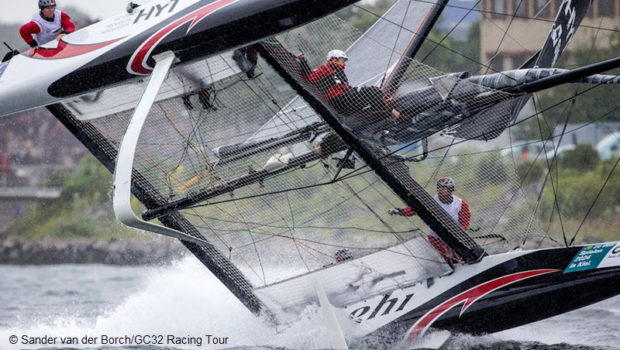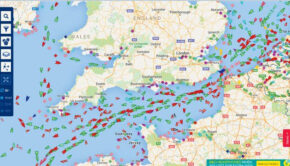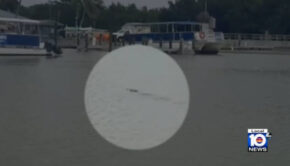Safety: Is the Sport adapting to its Evolution?
Published on January 30th, 2017
At the 2016 Yacht Racing Forum in November, one of the sessions sought to address the safety issues in our evolving sport.
Is the management of Yacht Racing (organisers and participants) adapting to the evolution of the Sport? The sport of sailing is changing: the boats are faster, the foils sharper, the dangers bigger. Is the sport ready for this change? Are the classes, event organizers and clubs ready to adapt? What does the sports’ governing body think and do about it?
Also asked was:
• Where is the drive for faster and more volatile boats coming from? Who are the main drivers? Do we know their objectives?
• More spectacle, more extreme, more thrill might attract more thrill seeking audience, but how much risk are we willing to take?
John C. Quigley of QXI International Ltd was a panelist on this session and shares some of his notes:
1. Clearly ongoing natural curiosity and innovation is where this starts – but this time someone opened Pandora’s Box and out popped foils and wings! Well surprise, surprise, and no-one was anticipating 30 kts + around a stadium course!
2. However, one of the main drivers of the proliferation of the multihull and foiling in professional events though is the commercial side of the sport still desperately seeking a solution to the million dollar question of how sailing achieves a regular non participant / practitioner fan / spectator base level that will entice mainstream TV coverage (and money) like F1 / Soccer / Tennis / Golf and with it major sponsors queueing up to get involved – and stay.
The reality is we have been talking and chasing this in the big events like the Volvo Ocean Race and America’s Cup for 15+ years, and it likely will never happen. So we should adapt and focus accordingly. Added to which television is over – focus on the new media and produce your own programme – make it available – then promote it.
3. So we push to the edge of the envelope, make it fast and exciting, which is terrific for the participants who are fit and skilled enough to take part – but as someone asked – who are we attracting or trying to attract to watch?
The truth is that the new spectators who do not understand or engage in sailing bore quickly and the only thing that keeps them briefly engaged is when it gets hairy, so in fact they are actually just waiting to see the crash or almost crash. Just like motor car and motorcycle racing – it’s fast and dangerous and they watch saying ‘will he make it? Ouch!’ and then go off and play another video game, tweet someone, or arrange their date tonight from a menu on Tinder.
4. Of course, in addition, what the big boys (Pros) do, the little guys want to copy? Just like everyone at school thought they could play soccer like George Best or David Beckham, depending on your era.
That of course is where it all gets even messier, especially when mixed in with traditional boats that actually stay in the water and would not break the speed limit on a residential street in suburbia.
5. Because we do not have clearly defined channels within sailing administration and regulation that separate the issues of Commercial, Professional and Amateur Racing / Olympic Sailing / Leisure (just for the love of it) Sailing, there can be a tendency to try to find one size fits all solutions or at least get confused or dilute the end product in doing so, or even do nothing. Each of these has different issues and priorities and drivers. Each should be assessed and be acted upon accordingly.
6. There are of course commonalities across all sectors which is the glue that binds us all together, and creates overlaps and often transitions of participants between the sectors over a lifetime, but there are clear differences too.
World Sailing creates and provides a core platform for all those groupings, especially the racing groups, and guidelines and regulations that endeavour to lay down best practice which if observed will aid participants to stay safe whilst enjoying the thrills and spills of whatever element they pursue.
However, WS knows that it needs to engage, guide, and regulate up to a certain point and thereafter the practitioners need to run their businesses and sports and self-regulate. That is unless those practitioner fail to achieve best practice and in so doing put at risk not only people and businesses but also the wider sport reputationally.
7. Risk Management, in its broadest form in the sport, needs to come from the top level and trickle down. By which I mean – the Commercial and Professional Sailing world to begin with. The best practices trickle down and then needs to be applied proportionately at the levels below as applicable.
8. The professional sailing industry has a terrible historical reputation for burning or scaring off sponsors. Things are much better now but not perfect.
Very few sponsors actively seek a sports property to engage their brand with which will terminate through breakage less than halfway through the programme sold to them, or believe they will get better value from the disaster media exposure. Fewer still want to associate their brand with damage to property and major injury or death of their representative team members.
So Event organisers and teams have to do something about that.
It is important that sponsors understand at the outset what the risks are, how they are mitigated and managed, and where their value return realisation sits within the programme. For example, in an IMOCA Open 60 Vendee Globe campaign, a sponsor needs to understand that a large proportion of the value return needs to be achieved prior to the start of the Vendee so that completion of the Vendee and success (slim odds for many) is the icing on top of the value cake = happy sponsor.
Here sits the financial driver, and in the commercial world that needs to be recognised as a driver to address the risks that have in recent years escalated and continue to in certain sectors.
9. Some parts of the industry have a history of doing the same to insurers, without whom organisers, teams, and sponsors cannot in this day and age operate.
We spend a lot of time along with insurers endeavouring to help race organisers and teams mitigate and manage risk through adherence to best practice which also has to be an organic benchmark growing and adjusting in parallel with industry changes.
Volvo Ocean Race is a perfect example of a team of people who in the 2014-2015 edition planning embraced professional assessment and balancing of risk throughout the structure of the event and the benefits were / are self-evident. Extreme Sailing Series was another to engage early in its development and to date has proven the value of taking that approach.
But others do not.
Some become uninsurable, some partially so (like certain masts in certain events at certain times), some find insurance with reliable insurers uneconomic – the insurers cannot afford to offer a price the insured can afford.
Insurers are financial partners who are there to enter into a risk exchange with the insured party to help them be able to do the things they want to do, but to do so you have to be able to assess the risk, see how, despite risk existing, it is being minimised or controlled, in order to make it financially viable for both sides.
Their mission is to indemnify (protect) the insured (organiser or team) against fortuities – not likely happenings or almost certainties. They are not bookies!
10. Education is really important so that insureds realise the value of aiming to create as much certainty in their programme as possible. Just as important, if not more so, as sail development, polars, weather routing, team nutrition, and physical fitness. Particularly in the commercial and professional world.
11. Some of the classes, organisers, and clubs at the commercial / professional level have made good progress but there is almost certainly much more to be done.
The commercial / professional organisers unfortunately need to become very proactive and engaged in deciding how the business of the day should be conducted and write their terms of participation in such a way that compliance by teams is a requirement and non-compliance translates into penalties, disqualification, or exclusion from the event. Teams may need to be told that equipment structural inspections and surveys need to be carried out regularly, that in certain conditions while racing there is a minimum crossing clearance requirement, or just as the Extreme Sailing Series does, that no gennakers be flown and no guests taken onboard during certain races due to weather conditions.
For some events, teams may need to be reminded every race day that this is a business and broken boats and people cannot sail and sponsors and guests are paying for sailing (much as they momentarily enjoy someone else’s crash).
12. Ultimately, with the new levels of risk that these new developments bring to the sport, the Organisers, Sponsors (event & boats), Team Management, Skippers and Crews to varying levels are exposed to the potential of liability and being pursued by injured parties holding them responsible for whatever may have or is alleged to have occurred. It is not just racing teams and boats. Umpire, Marshalling, Press, Team, and Spectator boats have all been involved in incidents over the years. More needs to be done.
What happens when a foil breaks at speed? Is control of the boat lost briefly? How do we keep crew in the boat and away from the foils? What rules should apply to wearing safety gear offshore in yachts racing in excess of 20 kts as a matter of course. Big Multihulls offshore – clip on or not? PFDs all the time excess of 20kts?
13. The answer is that this should not be tackled in isolation and that the Commercial / Professional Events and Teams and Risk Advisors should come together in committee or working party to mutually assess and self-audit the risks, and take away recommendations or decisions to be implemented as best practice. The other industry sectors can then meet with representatives from this level and be assisted with review of their own events and classes or teams.









 We’ll keep your information safe.
We’ll keep your information safe.